The DARPA Grand Challenge is a prize competition for American autonomous vehicles, funded by the Defense Advanced Research Projects Agency, the most prominent research organization of the United States Department of Defense. Congress has authorized DARPA to award cash prizes to further DARPA's mission to sponsor revolutionary, high-payoff research that bridges the gap between fundamental discoveries and military use. The initial DARPA Grand Challenge in 2004 was created to spur the development of technologies needed to create the first fully autonomous ground vehicles capable of completing a substantial off-road course within a limited time. The third event, the DARPA Urban Challenge in 2007, extended the initial Challenge to autonomous operation in a mock urban environment. The 2012 DARPA Robotics Challenge, focused on autonomous emergency-maintenance robots, and new Challenges are still being conceived. The DARPA Subterranean Challenge was tasked with building robotic teams to autonomously map, navigate, and search subterranean environments. Such teams could be useful in exploring hazardous areas and in search and rescue.

Simultaneous localization and mapping (SLAM) is the computational problem of constructing or updating a map of an unknown environment while simultaneously keeping track of an agent's location within it. While this initially appears to be a chicken or the egg problem, there are several algorithms known to solve it in, at least approximately, tractable time for certain environments. Popular approximate solution methods include the particle filter, extended Kalman filter, covariance intersection, and GraphSLAM. SLAM algorithms are based on concepts in computational geometry and computer vision, and are used in robot navigation, robotic mapping and odometry for virtual reality or augmented reality.
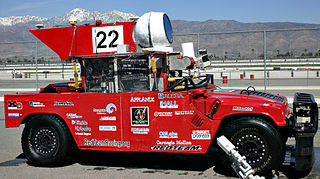
Sandstorm is an autonomous vehicle created by Carnegie Mellon University's Red Team, for the 2004 and 2005 DARPA Grand Challenge competition. It is a heavily modified 1986 M998 HMMWV.

Kat-5 is an autonomous vehicle created by Team Gray, an organization comprising employees from The Gray Insurance Company and students from Tulane University's School of Engineering, for the 2005 DARPA Grand Challenge.

Sebastian Thrun is a German-American entrepreneur, educator, and computer scientist. He is CEO of Kitty Hawk Corporation, and chairman and co-founder of Udacity. Before that, he was a Google VP and Fellow, a Professor of Computer Science at Stanford University, and before that at Carnegie Mellon University. At Google, he founded Google X and Google's self-driving car team. He is also an adjunct professor at Stanford University and at Georgia Tech.

William L. "Red" Whittaker is an American roboticist and research professor of robotics at Carnegie Mellon University. He led Tartan Racing to its first-place victory in the DARPA Grand Challenge (2007) Urban Challenge and brought Carnegie Mellon University the two million dollar prize. Previously, Whittaker also competed in the DARPA Grand Challenge, placing second and third place simultaneously in the Grand Challenge Races.
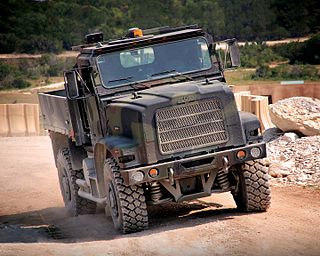
TerraMax is the trademark for autonomous/unmanned ground vehicle technology developed by Oshkosh Defense. Primary military uses for the technology are seen as reconnaissance missions and freight transport in high-risk areas so freeing soldiers from possible attacks, ambushes or the threat of mines and IEDs. The technology could also be used in civilian settings, such as autonomous snow clearing at airports.
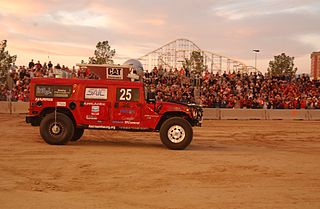
H1ghlander is an autonomous vehicle. Created by Carnegie Mellon University's Red Team, it is a heavily modified 1999 HUMMER H1. It competed in the 2005 DARPA Grand Challenge.
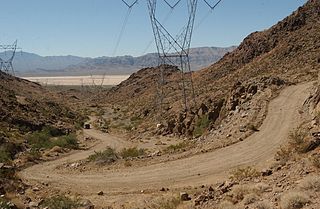
The second driverless car competition of the DARPA Grand Challenge was a 212 km (132 mi) off-road course that began at 6:40 am on October 8, 2005, near the California/Nevada state line. All but one of the 23 finalists in the 2005 race surpassed the 11.78 km (7.32 mi) distance completed by the best vehicle in the 2004 race. Five vehicles successfully completed the course:
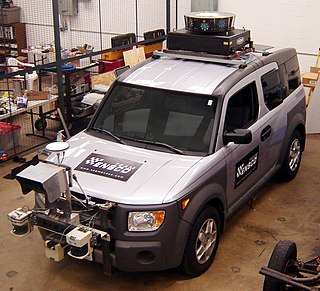
The third driverless car competition of the DARPA Grand Challenge was commonly known as the DARPA Urban Challenge. It took place on November 3, 2007 at the site of the now-closed George Air Force Base, in Victorville, California, in the West of the United States. Discovery's Science channel followed a few of the teams and covered the Urban Challenge in its RobocarsArchived 2008-07-30 at the Wayback Machine series.

The Volkswagen Electronics Research Laboratory (VWERL) is a division of the Volkswagen Group of America, Inc., with its headquarters in Silicon Valley.
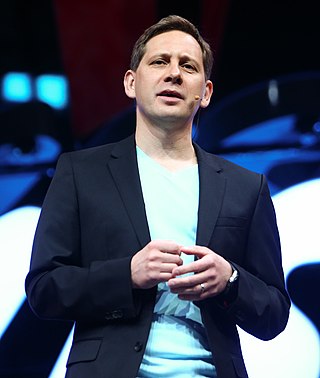
Dmitri Dolgov is a Russian-American engineer who is the co-chief executive officer of Waymo. Previously, he worked on self-driving cars at Toyota and Stanford University for the DARPA Grand Challenge (2007). Dolgov then joined Waymo's predecessor, Google's Self-Driving Car Project, where he served as an engineer and head of software. He has also been Google X's lead scientist.
CajunBot refers to the autonomous ground vehicles developed by the University of Louisiana at Lafayette for the DARPA Grand Challenges. CajunBot was featured on CNN and on the Discovery Channel science series Robocars.
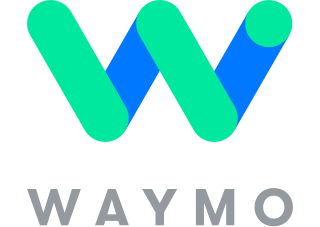
Waymo LLC, formerly known as the Google Self-Driving Car Project, is an American autonomous driving technology company headquartered in Mountain View, California. It is a subsidiary of Alphabet Inc.
The Learning Applied to Ground Vehicles (LAGR) program, which ran from 2004 until 2008, had the goal of accelerating progress in autonomous, perception-based, off-road navigation in robotic unmanned ground vehicles (UGVs). LAGR was funded by DARPA, a research agency of the United States Department of Defense.

MadeInGermany was a driverless car developed by the Freie Universität Berlin and AutoNOMOS Labs in 2011.
Gary Bradski is an American scientist, engineer, entrepreneur, and author. He co-founded Industrial Perception, a company that developed perception applications for industrial robotic application and has worked on the OpenCV Computer Vision library, as well as published a book on that library.
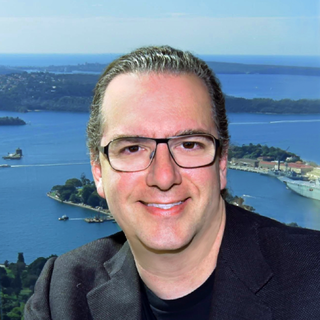
Adrian Kaehler is an American scientist, engineer, entrepreneur, inventor and author. He is best known for his work on the OpenCV Computer Vision library, as well as two books on that library.

Chris Urmson is a Canadian engineer, academic, and entrepreneur known for his work on self-driving car technology. He cofounded Aurora Innovation, a company developing self-driving technology, in 2017 and serves as its CEO. Urmson was instrumental in pioneering and advancing the development of self-driving vehicles since the early 2000s.
David Stavens is an American entrepreneur and scientist. He was co-founder and CEO of Udacity; a co-creator of Stanley, the winning self-driving car of the DARPA Grand Challenge; and co-founder and CEO of Nines, a creator of AI-enabled FDA-approved medical devices. Stavens has published in the fields of robotics, machine learning, and artificial intelligence and has helped start organizations with an aggregate market value of over $30 billion.



















